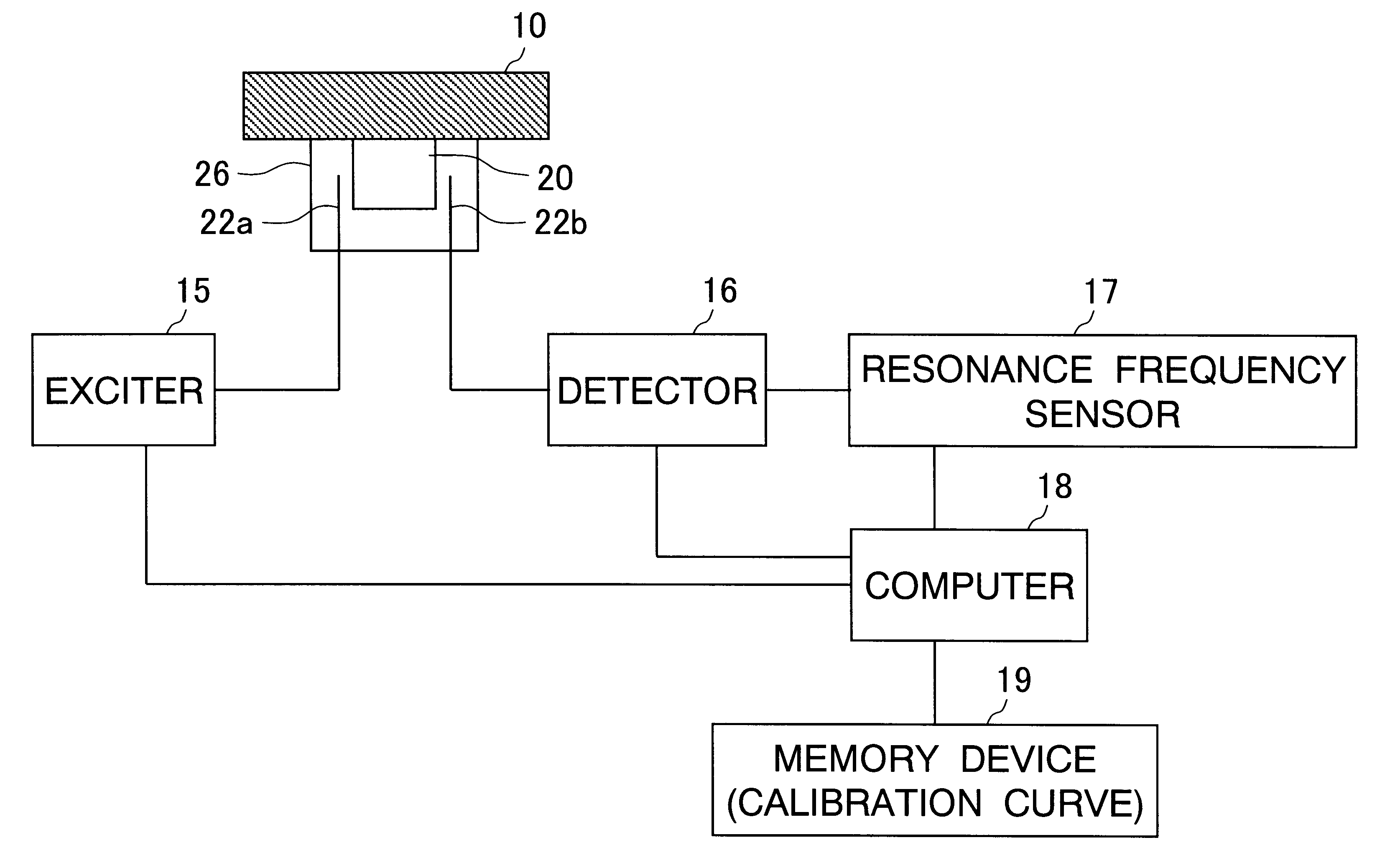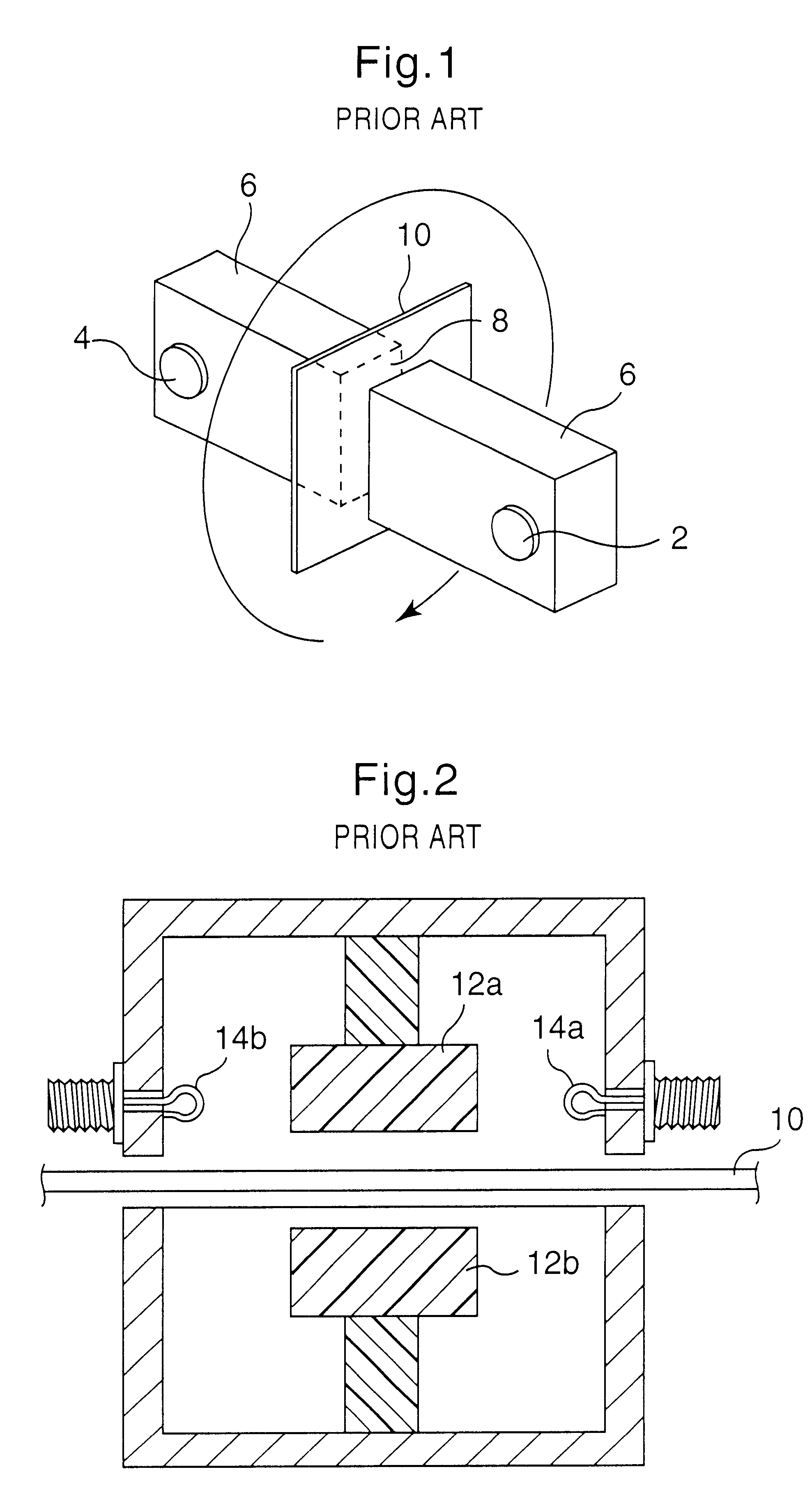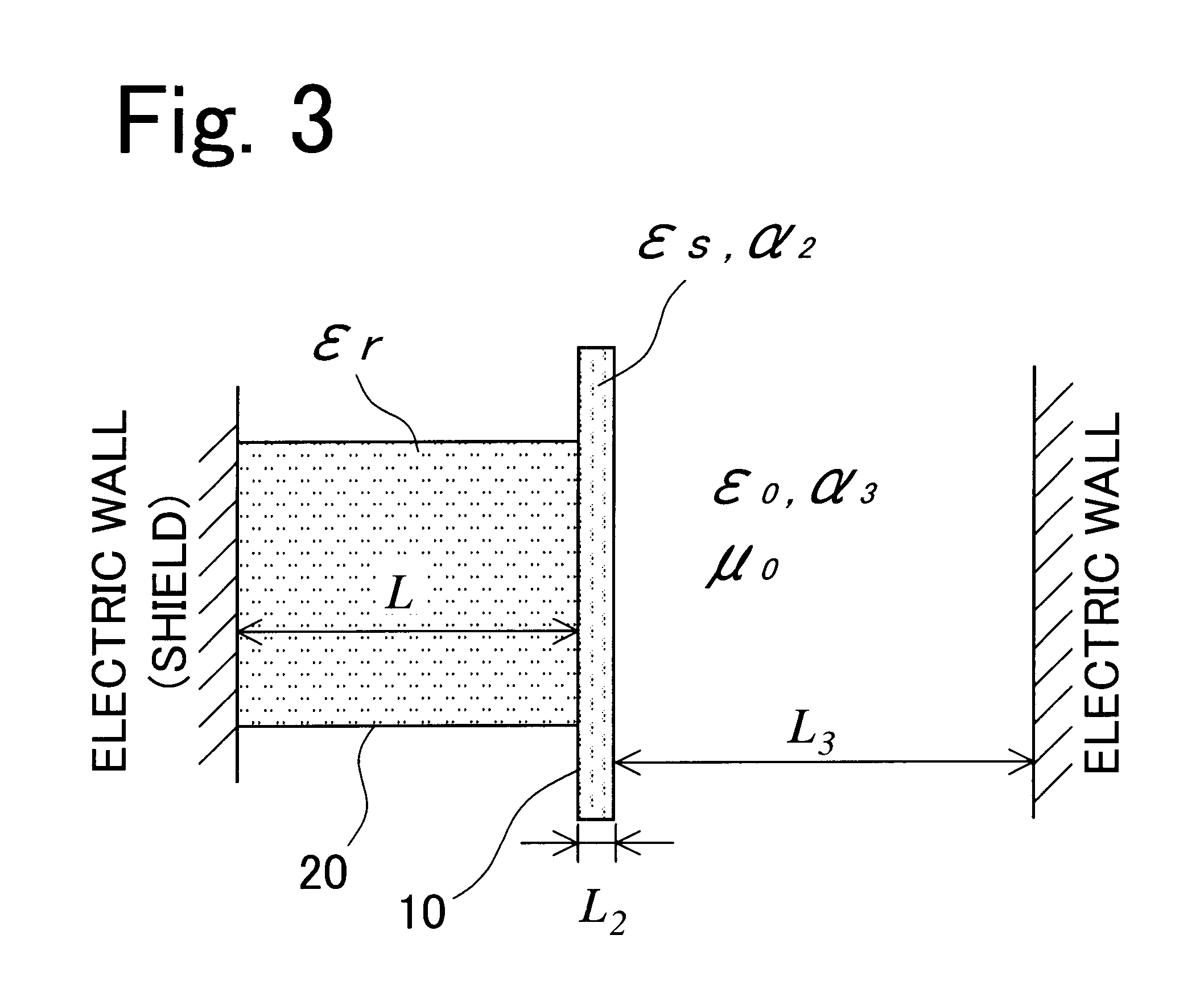Method and device for measuring dielectric constant
- Summary
- Abstract
- Description
- Claims
- Application Information
AI Technical Summary
Problems solved by technology
Method used
Image
Examples
example 1
FIG. 7 shows one Example of the present invention, exhibiting a sectional view in a case of bringing a sample into contact with a dielectric resonator and measuring the same. The dielectric resonator itself is identical in structure to that shown in FIG. 5. A square dielectric resonator 20 of 20.84 in dielectric constant is mounted with the bottom surface along the horizontal direction in a shielding brass vessel 26 of which the upper part is open. The dielectric resonator 20 is so set that its upper surface is substantially flush with an edge of the opening of the shielding vessel 26, and a sample 10 is placed to block the opening of the shielding vessel 26. An excitation antenna 22a and a detection antenna 22b are rod antennas, which are set between the shielding vessel 26 and the dielectric resonator 20.
Three polyethylene (PE) boards of 100 mm by 100 mm having a thickness of 2 mm as a sample 10 are brought into contact with this dielectric resonator 20. The antennas 22a and 22b o...
example 2
To improve the Q value (sharpness of resonance) of a dielectric resonator, a spacer 30 was interposed between the bottom surface of the dielectric resonator 20 and a shielding vessel 30, as shown in FIG. 12. Referring to FIG. 12, (A) is a plan view, and (B) is a vertical sectional view of (A). The relation between the thickness of the spacer 30 and the Q value varied as shown in FIG. 13 when making resonance of a TM.sub.201 mode at 4 GHz. Referring to FIG. 13, (A) shows a case where the spacer 30 is a metal sheet, and (B) shows a case where the spacer 30 is a PET (polyethylene terephthalate) film. It is understood from these results that the thickness of the spacer 30 is optimally around 0.5 mm for improvement of the Q value.
FIG. 14 shows results obtained by measuring the difference between Q values responsive to presence / absence of the spacer 30. The horizontal axis shows frequencies, and the vertical axis shows microwave transmission intensity. (A) shows a case of interposing the ...
PUM
 Login to View More
Login to View More Abstract
Description
Claims
Application Information
 Login to View More
Login to View More - R&D
- Intellectual Property
- Life Sciences
- Materials
- Tech Scout
- Unparalleled Data Quality
- Higher Quality Content
- 60% Fewer Hallucinations
Browse by: Latest US Patents, China's latest patents, Technical Efficacy Thesaurus, Application Domain, Technology Topic, Popular Technical Reports.
© 2025 PatSnap. All rights reserved.Legal|Privacy policy|Modern Slavery Act Transparency Statement|Sitemap|About US| Contact US: help@patsnap.com



